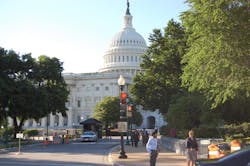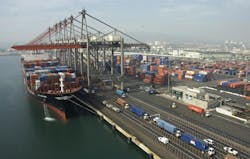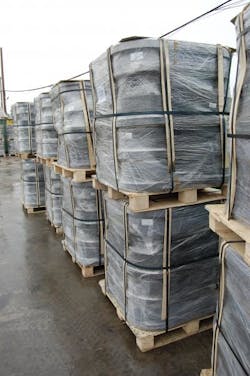There isn’t much to cheer about down the road, as the International Monetary Fund (IMF) is already trimming its economic growth forecasts mainly due to the tough sledding the U.S. faces over getting its financial house in order – not in the least concerning how to dial back the “quantitative easing” policy of the Federal Reserve without generating a worldwide recession as a side effect.
Here’s the “big picture” take of the IMF on where the world’s economies are heading:
- In the U.S., its projections are based on the key assumption that the ongoing shutdown in the federal government will be short-lived and the debt ceiling will be raised on time. Growth is expected to rise from 1½ percent this year to 2½ percent in 2014 driven by continued strength in private demand, which is supported by a recovering housing market and rising household wealth.
- For the European Union, where the Euro holds sway, policy actions have reduced major risks and stabilized financial conditions, although growth in the periphery is still constrained by credit bottlenecks. The region is expected to gradually pull out of recession, with growth reaching 1 percent in 2014.
- In China, growth is projected to decelerate slightly from 7½ percent this year to 7¼ percent in 2014. Policymakers have refrained from stimulating activity amid concerns for financial stability and the need to support a more balanced and sustainable growth path.
- Overall, growth in emerging market and developing economies is expected to remain strong at 4½–5 percent in 2013–14, supported by solid domestic demand, recovering exports, and supportive fiscal, monetary and financial conditions. Commodity prices will continue to boost growth in many low-income countries, including those in sub-Saharan Africa. But economies in the Middle East and North Africa, Afghanistan, and Pakistan region will continue to struggle with difficult economic and political transitions.
- Yet growth in major emerging markets, although still strong, is expected to be weaker compared to what the IMF forecast in its July 2013 WEO Update. This is partly due to a natural cooling in growth following the stimulus-driven surge in activity after the Great Recession, with structural bottlenecks in infrastructure, labor markets, and investment have also contributed to slowdown in many emerging markets.
“Indeed, these growth transitions, combined with an approaching turning point in U.S. monetary policy, have led to new challenges and risks,” Blanchard (at right) stressed.
“In particular, long-term interest rates in the United States and many other economies have increased more than expected,” he added. “Although the U.S. Federal Reserve recently decided to not slow the pace of its asset purchases yet and capital outflows from emerging markets have subsided somewhat, bond yields remain well above levels of early May. And there is a distinct risk that financial conditions will tighten from their current, still supportive levels.”
Such gloomy forecasts are not surprisingly leading a lot of CEOs to pull back on their own business projections – and it’s those projections that lead to higher or lower levels of freight for trucking.
The Conference Board and global consulting firm PricewaterhouseCoopers (PwC) regularly poll business leaders via the Measure of CEO Confidence survey, and both found the while CEO confidence increase in the second quarter, it pulled back in the third quarter, with the survey’s metric now reading 54, down from 62 in the second quarter.
Even though a reading over 50 indicates more, rather than less, confidenceon the part of CEOs, Lynn Franco, director of economic indicators at The Conference Board is troubled nonetheless."CEO confidence declined in the third quarter as increasing uncertainty about the short-term outlook prevailed," she said. "Expectations for growth in both India and Brazil deteriorated significantly, while the outlook for the U.S., Japan and China, despite less upbeat, on balance remained positive."
On top of that, CEO assessment of current economic conditions declined considerably with only Only 33 percent claiming conditions are better compared to six months ago, down from 60 percent in the second quarter. Business leaders are also less positive about conditions in their own industries. Approximately 32 percent say conditions in their own industries have improved, down from 40 percent last quarter.
And while CEOs were more positive in their assessment of current economic conditions in Europe than last quarter, sentiment is less favorable for the U.S., China and Japan, with sentiment regarding current conditions in India and Brazil turning “pessimistic” compared to last quarter, Franco noted.
Finally, while CEO expectations over the next six months are more positive for Europe, all other regions experienced declines – with expectations for India and Brazil deteriorating “significantly” and becoming quite “negative,” according to The Conference Board and PwC. Still, though short-term outlook for the U.S., Japan and China is declining, CEOs on balance remains positive about the economic performance ahead for those regions.
How are truckers reacting to all of this? Well, TL carrier Knight Transportation for one is lowering its earnings expectations for both the third and fourth quarters this year – mainly due to soft freight demand, particularly in the first half of the third quarter, which is being complicated by growing challenges related to recruiting drivers and changes to hours of service (HOS) rules that went into effect July 1.
Based on preliminary results, Knight now expects its earnings will range from 18 to 20 cents per diluted share in the third quarter, down from previous estimates of 22 to 24 cents per diluted share, with fourth quarter earnings downgraded to 20 or 23 cents per diluted share from prior estimates of 22 to 25 cents per diluted share.
OK then, you rightfully ask, that’s bad – so where’s the supposedly “good stuff” in all of this?
Well check out this recent global trade report released by banking and research firm HSBC, which finds that U.S. export trade is going to soar as demand for infrastructure goods increases from many countries, despite all the economic issues addressed by the IMF earlier in this post.According to this report – which includes short-, mid-, and long-term trade outlook – industrial machinery and transport equipment are expected to be the top U.S. export growth sectors, accounting for 35 percent of the growth in exports over the next three years.
Globally, infrastructure trade is set to triple by 2030, growing at an average annual rate of nine percent from 2013 to 2030, and accounting for 54 percent of total global exports goods by 2030, up from 45 percent in 2013.
“Infrastructure is the bedrock that enables economic activity,” said Steve Bottomley, group general manager and head of commercial banking in North America for HSBC. “The investment countries are making in infrastructure is phenomenal and provides a huge opportunity for U.S. businesses looking to grow and develop.”And despite a recent slowdown in emerging markets, most U.S. business leaders see Latin America (20 percent) as the most promising region for export trade growth in the near term, followed by China (13 percent) and Canada (six percent), according to HSBC’s analysis.
“The U.S. has good access to a wide range of export markets because of its geographical position, openness to trade and competitiveness, especially in transport equipment and industrial machinery,” said Prabhat Vira, regional head of global trade and receivables finance in North America for HSBC.
“Rising middle classes across Asia’s rapidly emerging markets will drive significant infrastructure demand in the region,” he added. “And as China looks to scale the value chain in terms of the goods it manufactures, there is a strong opportunity for developed economies like the U.S. to supply sophisticated investment equipment to the country’s producers.”
Other findings from HSBC’s research include:
- U.S. exports to China will more than double over the next decades, from seven percent today to 18 percent in 2040;
- U.S. transport exports to China are expected to rise by over 10 percent to the 2030s.
- Canada is and will remain the most important export market for the U.S. in the next two decades;
- Average growth in U.S. exports will be close to 6 percent annually to 2030.
- Demand for infrastructure products in developed markets remains strong because economies like the U.S. must renew and replace existing capital stock to maintain their own competitive advantage in supplying investment goods to the rest of the world.
- As a result, U.S. imports of transport equipment and information, communications and technology equipment are set to account for over half the growth in U.S. imports in the long term.
- By 2020, India will overtake the U.S. to become the lead importer of goods for infrastructure, as it invests to build its domestic networks, and China will outpace the U.S. to become the top importer of investment equipment, as it invests to boost its manufacturing productivity.
As a result of such findings, HSBC said U.S. businesses reported increased confidence in near term trade prospects, pushing the HSBC Trade Confidence Index from 107 to 114, an all-time high since the index’s inception, and higher than the global index average of 112.
Additionally, 67 percent of U.S. business leaders surveyed expect export and import volumes to rise in the next six months, up from 48 percent in the second half of 2012, and 29 percent cited improved global economic conditions as the main reason for increasing business, the report finds.
That’s some good stuff and hopefully, if our short-term squabbling over the U.S. government shutdown and debt-ceiling limits are resolved, truckers will see some healthy freight levels as a result.





